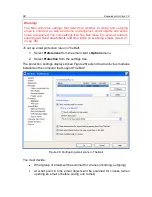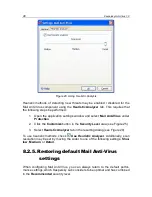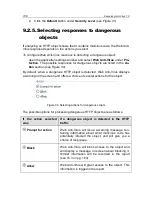
104
Kaspersky Anti-Virus 7.0
9.2.2.
Creating a trusted address list
You have the option of creating a list of trusted addresses whose contents you
fully trust. Web Anti-Virus will not analyze data from those addresses for danger-
ous objects. This option can be used in cases where Web Anti-Virus repeatedly
blocks the download of a particular file.
To create a list of trusted addresses:
1. Open the application settings window and select
Web Anti-Virus
under
Protection
.
2. Click on the
Customize
button under
Security Level
(see Figure 31).
3. In the window that opens (see Figure 32), create a list of trusted servers
in the
Trusted URLs
section. To do so, use the buttons to the right of
the list.
When entering a trusted address, you can create masks with the following wild-
cards:
*
– any combination of characters.
Example: If you create the mask
*abc*
, no URL contain
abc
will be scanned.
For example: www.virus.com/download_virus/page_0-9abcdef.html
?
– any single character.
Example: If you create mask
Patch_123?.com
, URLs containing that series
of characters plus any single character following the 3 will not be scanned.
For example:
Patch_1234.com
However,
patch_12345.com
will be
scanned.
If an
*
or
?
is part of an actual URL added to the list, when you enter them, you
must use a backslash to override the
*
or
?
following it.
Example:
You want to add this following URL to the trusted address list:
www.virus.com/download_virus/virus.dll?virus_name=
For Kaspersky Anti-Virus not to process
?
as a wildcard, put a backslash (
\
) in
front of it. Then the URL that you are adding to the exclusion list will be as fol-
lows: www.virus.com/download_virus/virus.dll\?virus_name=
9.2.3.
Using Heuristic Analysis
Heuristic methods are utilized by several real-time protection components and
virus scan tasks (see 7.2.4 at p. 82 for more detail).
Heuristic methods of detecting new threats may be enabled / disabled for the
Web Anti-Virus component using the
Heuristic Analyzer
tab. This requires that
the following steps be performed:






























